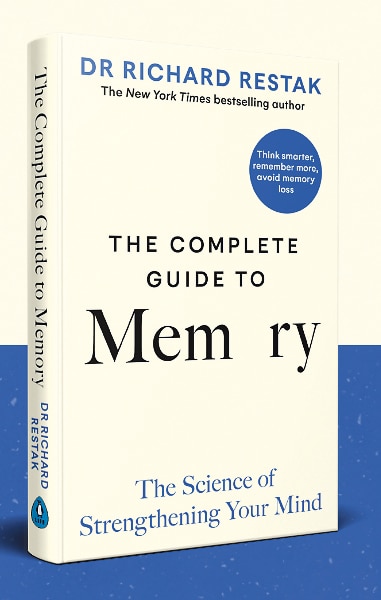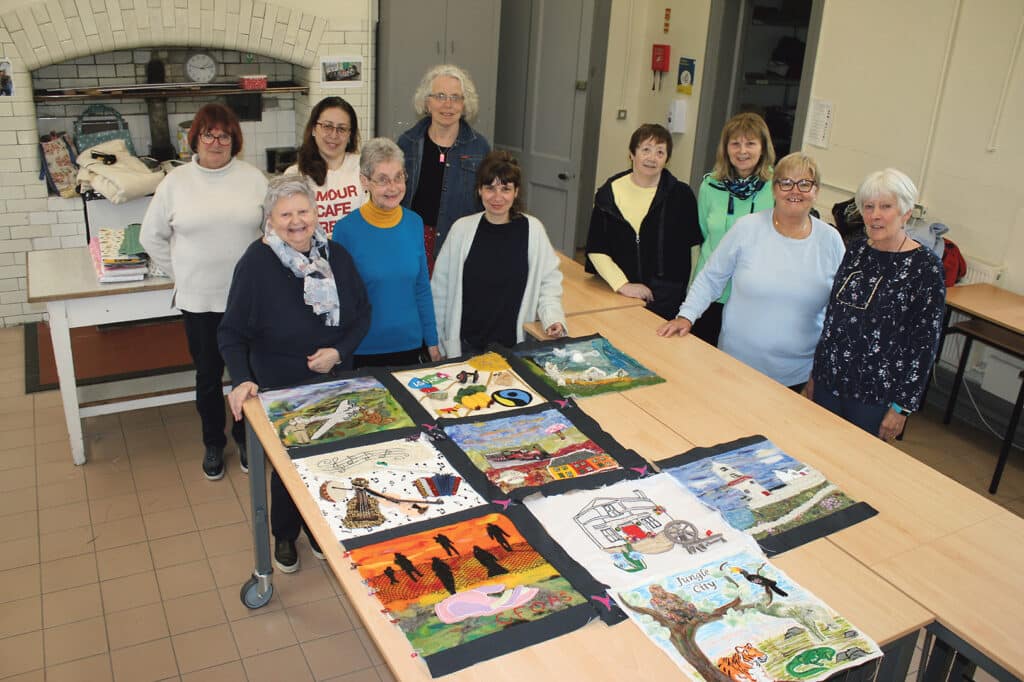
The Complete Guide to Memory: The Science of Strengthening Your Mind
Author: Dr Richard Restak
Reviewed by: Kim Boland
Aging is one of the big problems of the times we live in. As the proportion of elderly people increases we hear more of the difficulties this brings to society. The possibility of living into one’s eighties or nineties brings with it the need to look after oneself in order to enjoy these wonderful extra years of life. The world is full of information on exercise and diet and the contribution that these can make to one’s health and how these are of enormous value to physical wellbeing and also to mood and enjoyment of life. It is broadly accepted that better food and more exercise make for a better life.
What is spoken of less and possibly thought about more, is the question of memory. How many people who are in their 60s, 70s or 80s have not had some decline in their memory. If our skin and bones and the rest of our bodies show the effects of aging, how could it be that our memory would not decline over time. There is a great deal of worry about memory, forgetfulness, dementia and Alzheimer’s. Eventually a person may no longer be able to care for themselves if their memory is no longer adequate for the job. Where this happens we become a burden for those around us or face the costs of a nursing home.
People try to exercise every day because they know that the muscles they depend on will fade away if they do not use them. They eat good food to avoid disease and maintain the many miraculous processes that keep the body working.
Should we be doing something every day to exercise our memory?
One of the great things about the book ‘The Complete Guide to Memory – The Science of Strengthening Your Mind’ By Dr Richard Restak is that it was written by an eighty-year-old man and it is not a book that could be written by someone without a good memory. Dr Richard Restak is still working as Clinical Professor of Neurology at the George Washington University School of Medicine and Health Sciences, another indication that he has successfully applied the methods put forward in his book. After a lifetime studying the brain, and the publication of twenty books on neurobiology, he appears to have applied what he has learned and it has worked for him.
The purpose of the book is clear from two sentences in the first chapter. ‘This book will provide you the means of developing your memory.’ and ‘I have never encountered in my many years of neurological practice a patient with highly tuned memory skills who was suffering from Alzheimer’s disease or any other degenerative brain disease.’
One of the main themes running through the book is that there are many occasions where we do not remember something, but this does not indicate any failure of our mental processes. There are circumstances where a failure to remember is quite natural and sometimes beneficial. There is one story of a man who was unable to forget and in the end this turned out not to be a blessing. For some of the people mentioned, the ability to forget the details of the previous day’s work made it possible to have an amazing memory of the current day.

Another reason for an apparent failure of memory is that a memory has not been made. An example would be a person who leaves their work in the garden to go into the house and have lunch and then is unable to remember where their gardening gloves are. If they consciously put their gloves in a place which they would return too, then they would have made a memory. They would have used their ability to make a memory and would have been able to recall where their gloves were.
If someone has not paid attention to where they put something then they will not be able to find it.
It is one of the most fundamental points made. To have a memory one must have first of all paid attention. Without the paying of attention one cannot have a memory.
I found the book fascinating and read it cover to cover as soon as I got it. It is packed with information and I will need to study it carefully to get the best out of it. If I do set out to work on my memory as a regular practice, I will certainly want to refer back to it. The history of memory is given a chapter and possibly the written word was the first method of storing data that did not depend on the brain and its memory capacity. A highly developed memory was once an important ability for academics. I think that ten or eleven different categories of memory are discussed. Reading about these is like opening up the bonnet of a car and discovering the engine, battery, alternator, radiator, and many other components that are essential to the working of the car. I feel that trying to understand the different categories and functions of my memory will be a great help.
At one point Dr Restak suggests that one finds one’s own ways of improving one’s memory using the information that he gives. I have started to do this myself in three very small ways. When I go on a shopping trip I write out a list and then visualise the shelf where I will find each item. I then get in the car and go to the shop. Before I go to the checkout I check the list. I have also given up using a bookmark for the book that I read before I go to sleep at night; instead I memorise the page number. Both of these use visualisation to aid memory, one of the major recommendations.
I also do Wordle without using a pen and paper, which requires me to hold words and letters in my working memory. I am not perfect at these simple memory exercises but I am finding an improvement and I feel I have therefore started on the path to improving my memory.
For many years I have read about the benefits of exercise and diet and how they delay or prevent the onset of dementia but until now I have not found anything to help people deal directly with memory.
I can now study the book in detail so that I may be able to exercise my memory as well as my arms and legs and be able to look after myself and enjoy life.
A great book.


